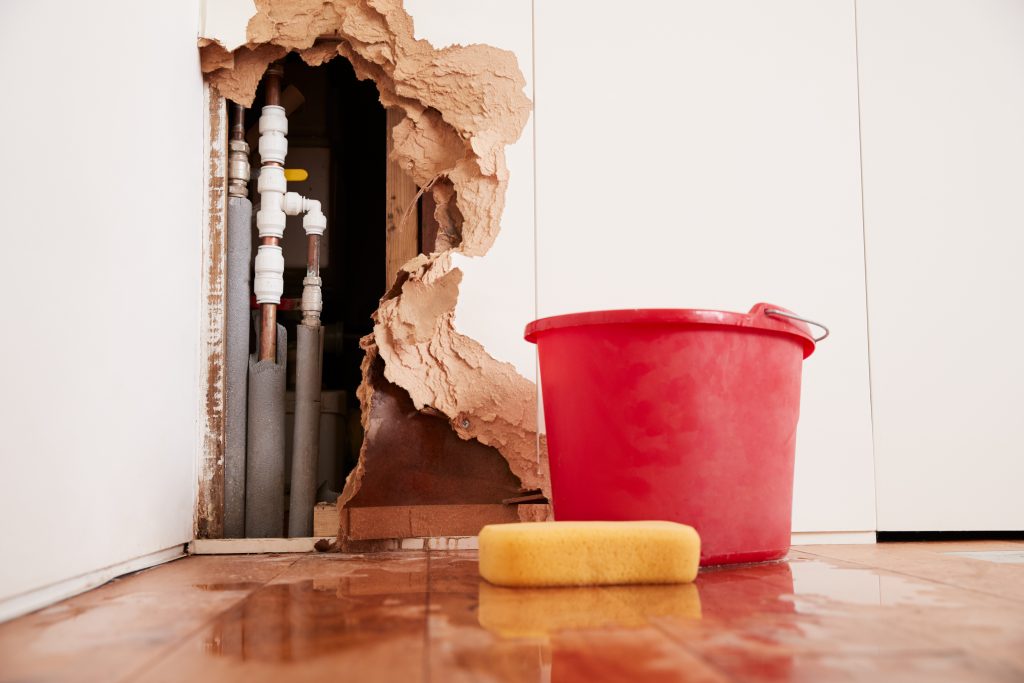Just how to Discover as well as Repair Work Water Leaks-- A Comprehensive Guide
Just how to Discover as well as Repair Work Water Leaks-- A Comprehensive Guide
Blog Article
Listed here down the page you'll find a lot of amazing content around Leaking water lines.

Early discovery of dripping water lines can mitigate a prospective calamity. Some little water leakages may not be visible.
1. Check Out the Water Meter
Every residence has a water meter. Examining it is a surefire way that assists you find leakages. For beginners, switch off all the water sources. Guarantee nobody will flush, utilize the tap, shower, run the cleaning equipment or dishwasher. From there, go to the meter as well as watch if it will change. Because nobody is using it, there ought to be no movements. That shows a fast-moving leakage if it relocates. Similarly, if you find no changes, wait a hr or more as well as check back again. This suggests you might have a sluggish leakage that might even be below ground.
2. Inspect Water Consumption
If you spot abrupt modifications, regardless of your intake being the exact same, it means that you have leakages in your plumbing system. A sudden spike in your costs indicates a fast-moving leakage.
On the other hand, a constant boost every month, despite the same practices, reveals you have a slow leak that's additionally gradually escalating. Call a plumber to extensively inspect your residential or commercial property, specifically if you feel a cozy area on your floor with piping underneath.
3. Do a Food Coloring Examination
When it concerns water consumption, 30% comes from commodes. Examination to see if they are running correctly. Decrease flecks of food shade in the tank and wait 10 mins. There's a leakage in between the container and bowl if the color somehow infiltrates your bowl throughout that time without flushing.
4. Asses Outside Lines
Do not fail to remember to inspect your outdoor water lines also. Needs to water seep out of the connection, you have a loosened rubber gasket. One small leak can throw away tons of water and also increase your water expense.
5. Evaluate the scenario and inspect
Home owners must make it a practice to check under the sink counters and also even inside cabinets for any kind of bad odor or mold development. These two warnings suggest a leak so timely attention is called for. Doing routine inspections, also bi-annually, can save you from a significant problem.
Extra significantly, if you recognize your house is already old, maintain a watchful eye on your heaters, hose pipes, pipelines etc. Look for discolorations and also deteriorating as many appliances and pipelines have a life expectancy. They will certainly also naturally degrade due to tear and use. If you presume leaking water lines in your plumbing system, don't await it to escalate. Call an expert plumber right away so you don't end up with a dreadful mess in your home.
Early discovery of dripping water lines can minimize a possible disaster. Some tiny water leaks might not be visible. Checking it is a surefire way that helps you find leaks. One small leak can squander heaps of water and also increase your water costs.
If you believe dripping water lines in your plumbing system, do not wait for it to intensify.
How to Know If Your Home Has a Hidden Leak
Water Meter Reveals Inexplicable Water Usage
If you’d like to test whether or not there’s a leak somewhere in your home, you can do this using your water meter. Here is how to conduct the test:
Don’t use any water in your home for at least 30 minutes; this also means not turning on faucets or water-using appliances.
Go outside, and check your water meter for activity.
If your water meter shows that there was activity, even though no one was using any water, this proves that there is a leak in your home.Visible Mold or Mildew Growth
Leaks behind walls create moist, dark environments that allow mold and mildew to grow and thrive. Eventually, you might see mold growth forming on the wall closest to a hidden leak.
If mold is growing in an area that receives a high amount of moisture, such as a bathroom, it may simply be an indication that better ventilation is needed. However, if you see mold growth on a wall or the ceiling in an area where you would not expect, you probably have a hidden leak.
Musty, Mildew Odor
Sometimes you might not be able to see the mold or mildew that is growing as a result of a leak. However, the smell can give the problem away just as easily. If you catch a whiff of something musty, there’s a good chance that old water is collecting somewhere in your home that you can’t see.
Stained/Warped Walls, Ceilings, or Floors
When your home soaks up water, a variety of red flags can become visible, including ceiling stains, bubbling drywall, warped walls, and sagging floors. While these issues can be caused by excess humidity, they can also be signs that a pipe or plumbing connection has started leaking behind your walls.
Inexplicably High Water Bill
After a while, you get a general sense for what your water bill should be. If you own a pool or sprinkler system, your bill will tend to be higher during summer. However, if you receive a water bill that seems especially high, and you can’t figure out what caused it, then you may have a hidden leak somewhere that’s increasing your bill.
https://www.plumbingjoint.com/blog/2019/july/how-to-know-if-your-home-has-a-hidden-leak/

I was introduced to that report on Detecting hidden plumbing leaks from a friend on another web property. Liked our piece of writing? Please share it. Let another person find it. I take joy in reading our article about Top leak detection hacks.
Report this page